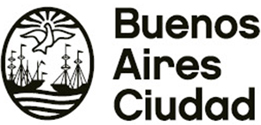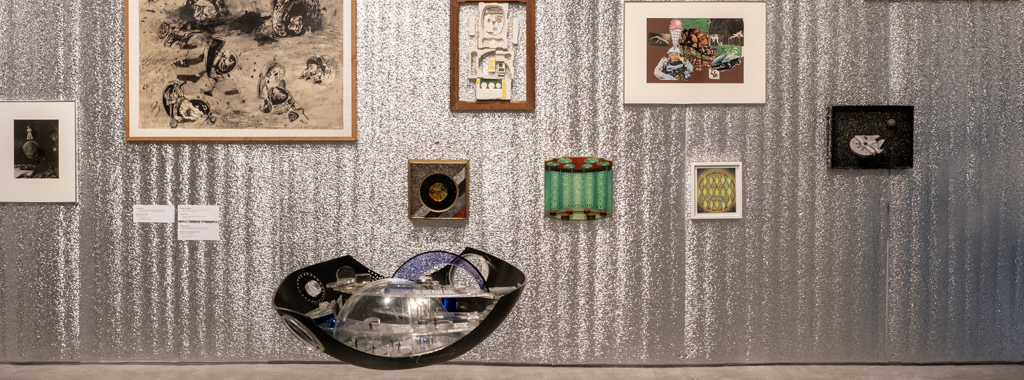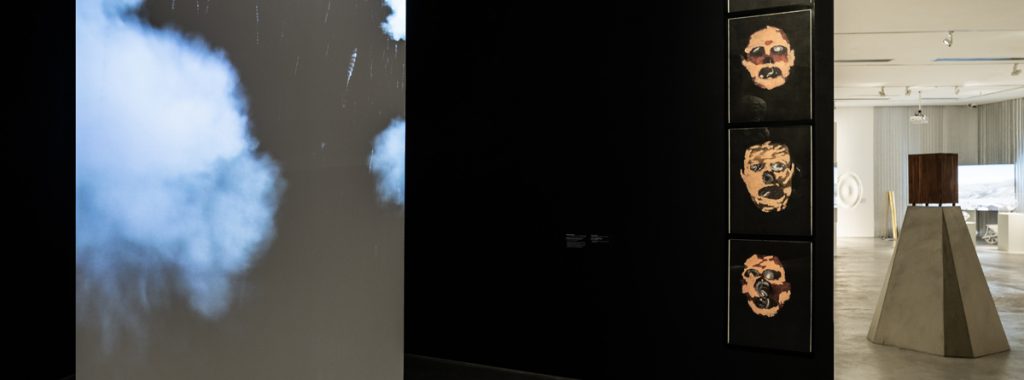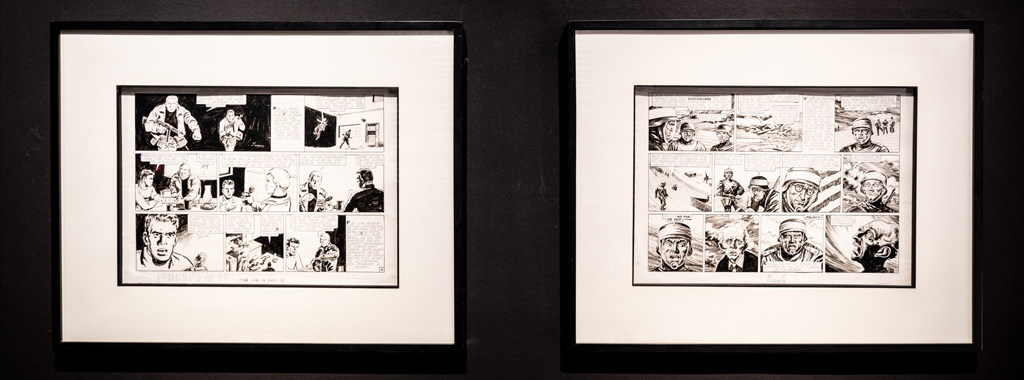This exhibition presenting the work of almost one hundred Argentinian artists, contemporary and historical, with indigenous and Western cultural roots, began with a question: can we utilise our relationship with the sky to retrace colonial narratives?
The stars drew the maps of the heavens that guided Europeans across the sea. And they guided the conquistadors to a continent they were ignorant of. The same stars had, from time immemorial, illumined all communities and shown them how to find their way around, where to settle, when to leave, when to sow or when to hunt, following the cycles of nature in a sustainable relationship with the planet. Human exploration of the heavens has opened up questions around space which should have no owners but may be conquered by big corporations. What means do we have to access the cosmos? Can the space outside ourselves act as a mirror to look at ourselves from the outside and re-imagine ourselves socially and politically? What sustainable and imaginative contributions to exploration can we in the South offer?
The first gallery focuses on the indigenous perspective of heaven and earth as a system of interrelationships, ascents and descents, reflections and reversals. It presents not only myths and models of the cosmos but their relations with the territory and its conflicts: genocides, deforestation, wildfires.
The second gallery presents utopias and dystopias in which Latin American artistic roots are in conversation with the universal languages of abstraction and their scientific and spiritual utopias, exposing the popular dissemination of the conquest of space during the Cold War and condemning corporate extractivism.
8 minutes 30 seconds is the time it takes for sunlight, the source of life on our planet, to reach the Earth.
A 18′ del sol [18′ from the Sun] is the title of an album by Luis Alberto Spinetta. Its displaced coordinates signal a more distant point in space, somewhere between Mars and Jupiter.
Artists: Erik Arazi, Nicolás Bacal, Gonzalo Beccar Varela, Antonio Berni, Diego Bianchi, Erica Bohm, Martha Boto, Manuel Brandazza, Adriana Bustos, Colectivo Cabezudxs, Feliciano Centurión, Mauricio Cerbellera, Germaine Derbecq, Sonia Delaunay, Sebastián Diaz Morales, Diana Dowek, Faivovich & Goldberg, Beatriz Ferreyra, Pauline Fondevila, Lucio Fontana, Raquel Forner, Gertrudis Frischenschlager, Daniel García, Carlos Luis García Bes, Maia Gattás Vargas, Noemí Gerstein, Sebastián Gordín, Diego Gravinese, Víctor Grippo, Alberto Greco, Silvia Gurfein, Miguel Harte, Alberto Heredia, Alicia Herrero, Alfredo Hlito, Agustín Inchausti, Enio Iommi, Vassily Kandinski, Gyula Kosice, Fernanda Laguna, José Luis Landet, Benito Laren, Daniel Leber, Lux Lindner, Raúl Lozza, Lea Lublin, Víctor Magariños D., Liliana Maresca, Juan Melé, Sebastián Mercado, Estanislao Mijalichen, Mauro Millán, Emiliano Miliyo, Ad Minoliti, Eduardo Molinari, Eduardo Navarro, Héctor G. Oesterheld, Ogwa, Martha Peluffo, Alicia Penalba, Andrés Pereira Paz, Emilio Pettoruti, Francis Picabia, Alberto Pilone, Micaela Piñero, Rogelio Polesello, Marcelo Pombo, Emilio Renart, Ingrid Roddick, Federico Roldán Vukonich, Christian Román, Hernán Salvo, Damián Santa Cruz, Rubén Santantonín, Mario Scorzelli, Francisco Solano López, Xul Solar, Cecilia Sosa, Grete Stern, Axel Strachnoy, Diana Teira, Julián Terán, Colectivo Thañí/Viene del monte, Andrés Toro, Joaquín Torres García, Rodrigo Túnica, Adrián Unger, Gregorio Vardánega, Mariano dal Verme, José Villalonga, Wüsüwül Wirka A Pana, Osías Yanov, Yente
Curated by: Javier Villa and Marcos Krämer
Exhibition Design: Iván Rösler
Production: Julieta Potenze
La Fábrica – A 18 minutos del sol [The Factory: 18 Minutes from the Sun]
We present a new episode of La fábrica [The Factory], which offers a peak behind the scenes of the exhibition A 18 minutos del Sol [18 Minutes from the Sun].
Curator Javier Villa, Head of Design and Exhibitions Iván Rösler and artist Rodrigo Túnica tell us how each area contributed to conceiving and producing this exhibition.
A 18 minutos del sol [18 Minutes from the Sun] is part of the programme El arte, ese río interminable [Art, That Endless River], on view at the Museo Moderno this year.
Portrait - Alicia Herrero
The artist Alicia Herrero (Buenos Aires, 1954) develops her work in every possible medium, such as installation, painting, video and performance, among others. What inspires her work, just as she describes in her portrait, is a “desire for exploration” that leads her to approach the limits of art in search of what lies on the other side, revealing unsuspected connections between different worlds along the way.
Her works have been exhibited in countless cities and form part of important public and private collections, and over her extensive career she has been recognised with the Konex 2022 Award (Installation); the National Award for Artistic Trajectory in 2021; the First Prize Fundación Fortabat 2019, among others. Alicia participates in the exhibition A 18 minutos del sol [18 Minutes From the Sun] with a large painting entitled Movimiento para deshechizar un paisaje (I) [Movement to unravel a landscape (I)].
After her artistic research focused on using graphic representations of world economic statistics, Alicia Herrero made this painting as a way of representing a recent study on the small global network of transnational companies that dominate the world’s economy. Based on studies that discovered an algorithmic and mathematical way of measuring the shareholder control exercised by large companies over small ones, Herrero represents these nuclei of economic powers as abstract forms that connect according to different forces, gravities and attractions. Like a cosmic planetary system, the image created by Herrero gives forceful visibility to the orbital links of the global economy, in which one can see the tension between the cruelty of inequities and the harmony and beauty of pure abstract forms.
Portrait - Adrián Unger
Today we meet Adrian Unger, a visual artist and aerospace engineer.
“How can we simplify the complex phenomena of nature?”. This question is one that inspires Unger’s interdisciplinary work. The artist uses the expressive resources of artistic languages to give visibility and comprehensibility both to complex natural phenomena and to other, no less complex, human phenomena, such as extractivism and the inevitable consequences of the exploitation of the planet’s natural resources.
Unger participated in the exhibition A 18 minutos del Sol [18 Minutes from the Sun] with a work called Humedales secos calientes [Hot Dry Wetlands]: a large-scale satellite image printed on a wall. In this piece, developed by VENG’s satellite information team, a very large area of wetlands shared by Argentina, Brazil and Paraguay can be seen in grey, and a yellow to red spectrum shows the fires that broke out from the beginning of 2020 until 2023.





